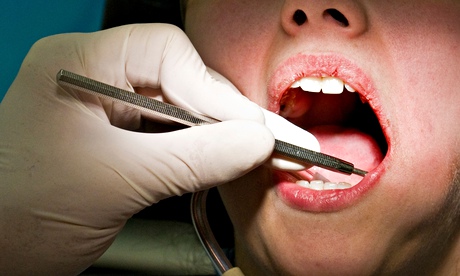


Cavities are quite common, even for those who have excellent oral hygiene. When a cavity happens, the dentist will remove the decaying portion of the tooth and fill the area with a strong material that will seal the hole. Without the filling process, the cavity will get much worse, and can lead to pain, abscess or even bone loss. Even so, many people avoid getting cavities filled because they are afraid of the dentist. Then does this procedure really hurt?

No, it usually does not hurt. Many people are terrified of going to the dentist because they hate the idea of pain. However, it’s important to remember that a dentist will never deliberately cause pain, and if you feel pain during any procedure, it’s best to make it clear immediately so that steps can be taken to remedy the problem. For getting a cavity filled, dentists will use a local anesthetic to numb the area. They numb the area with an injection in your gums; if that frightens you, most dentists will offer a numbing gel to use before the shot to ease the pain of it. Once the injection is done, you might feel pressure from the instruments used, but no pain.
In order to fill a cavity, the dentist will first use the local anesthetic. After that, a specific tool will be used to remove the damaged area of the tooth. This is usually done with a small drill, air abrasion instrument or laser – it depends on your preference, the expertise of the dentist as well as the area where the cavity is located. The dentist might test the area several times during the process to ensure all the bad area is removed.
Next, the dentist will clean the debris and bacteria extremely well. As part of this process, the doctor might put a barrier of resin, glass ionomer or other material to protect the nerve. Does getting a cavity filled hurt if the nerve is exposed? That’s possible – which is why dentists are so careful with ensuring the root is protected.
The dentist will then insert a filling that adheres to the healthy teeth and fill in the hole. This is usually done in layers; a special light is used to harden the area after each layer is applied. When it’s all complete, the filling will be filed down and polished.
Note: Please remember that there is almost no risk at all when a cavity is filled – it is a very common and safe procedure. If you have heart problems, let your dentist know so antibiotics can be given before the filling is done. This is because bacteria might enter the bloodstream and cause infection among those who have weakened immune systems or issues with their heart. The antibiotics lower the risk of endocarditis and other complications.
Now you know the answer to “does getting a cavity filled hurt?” Then what about after the procedure is done? In the first 1-3 hours, your mouth will be still numb. Don’t try to bite or chew now because you might end hurting your tongue or lips. This is especially important for children, because they may find the numbness very interesting and want to play with it. Once the anesthesia is gone, the area around the filling might be a bit sore, especially if the dentist had to remove areas that are below the gum line. This soreness will go away within a few days.
Here are some tips to help you care for the cavity filling.